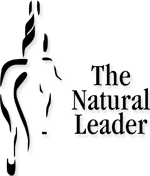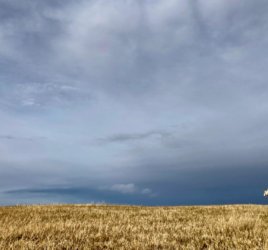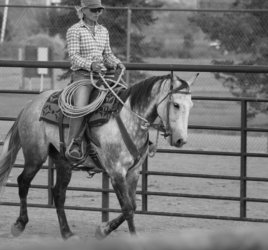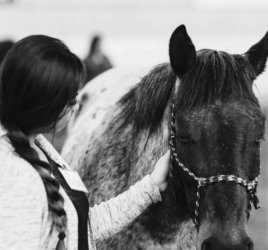A Measure of Control
 A horse has an acute awareness of self and presence of others, their survival has depended on it. While horses have come to accept us, domestication hasn’t changed that instinct.
A horse has an acute awareness of self and presence of others, their survival has depended on it. While horses have come to accept us, domestication hasn’t changed that instinct.
A recent program demonstrated how the slightest change in the environment can alter a horse’s view of safety. The day was gorgeous so we had the arena doors wide open all was fine until a small herd of deer crossed the yard, the horses went from sleepy to alert and ready to run in a heartbeat. We closed the doors.
The arena provides a measure of control over those unexpected changes which can be as small as a fly or big as a train. We prefer the focus remains on the interaction between horse and human.
While there are some things we can control learning how to adapt to what shows up is ongoing within The Natural Leader programs. A statement that refers as much to me as it does for those we host. Events of the day don’t always unfold as anticipated as if to test me to see if I practice what I preach.
Though some things fall out of my control, a constant is how well the horse will attend to the individual they work with. For many simply being with a horse is so far outside of their comfort zone a lot of the responsibility lies with the horse. As the human gains comfort it is the horse who has to wait patiently through the human’s idea of who has control.
The language many people default to through their interactions with the horse is indeed curious. As the participant gains comfort and confidence they often suggest “things got better once they got control of the horse”. Control may come in the form of a tight grip on the lead, pulling the horse around or simply trying to hold them back as they walk. A comment which of course begs the question of “Who is leading who?”. The non-verbal communication much more obvious than the words illustrates the root of where miscommunication in the workplace lies. What we say versus what people see.
Control is something we like to have in our lives, the very state that change upsets. Rather than embracing the opportunity of change we often resort to habits to slow down the pace of change or perhaps simply restrict our awareness of it. As we develop this envelope of denial, the horse or team, may be complying but they rarely let go their own need to deal with change.I often suggest after such comments that they might view “the lead rope as simply the illusion of control”. From my own experience if the horse wants to leave it is unlikely you can prevent it and at best you might end up with a rope burn.
Leadership requires that we recognise the language that fits a situation so that we choose words carefully. There are a number of ways we get participants to experience how letting go of the illusion of control can lead to a better outcome with the horse. For some it is truly a difficult task as they have to trust in both self and the horse. A tall task when you have 500kg trotting beside you.
What is so uplifting about the work with horses is when the language does change. When an individual begins recognise the authority of leadership isn’t about control but about gaining the awareness of self and others so you are working effortlessly together. Yes you might be out of breath but as the smiles, lightness and acceptance shows through the effort the words shift from control to collaboration and the recognition that change is something you adapt to through trust.



